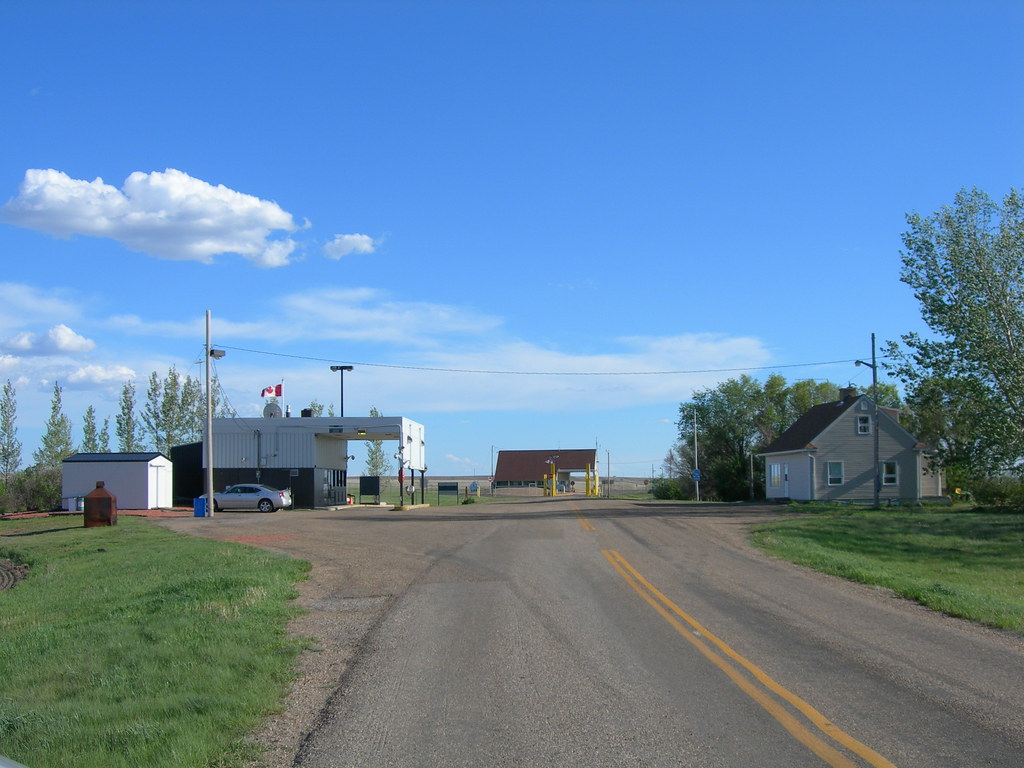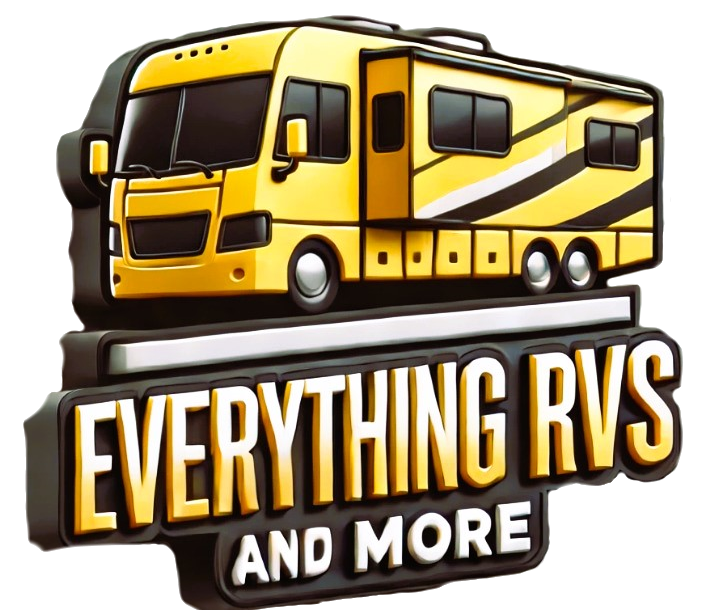Affiliate Disclosure: I earn commissions if you shop through the links below at no additional cost to you.
Last Updated on March 9, 2025 by Jeremy
Crossing the border between the United States and Canada in an RV or travel trailer is an exciting experience—if you’re prepared.
However, border regulations change frequently, and not knowing the latest rules can result in delays, denied entry, or hefty fines.
This guide covers everything you need for a smooth, stress-free border crossing, including:
✔ Required travel documents for you, your passengers, and pets.
✔ Vehicle registration, insurance, and temporary importation rules.
✔ Updated customs regulations, including what you can and can’t bring.
✔ Common mistakes and how to avoid long border wait times.
✔ LegalShield & IDShield—how legal & identity protection can help.
By the time you’re done reading, you’ll know exactly what to expect—so you can focus on the journey ahead.
Border Crossing Requirements for RVs and Travel Trailers
1. Valid Identification & Travel Documents
Every traveler in your RV—including children and pets—must have the proper documents. Border officers are strict about identification, and missing paperwork can lead to delays or denied entry.
For Human Travelers:

- US Citizens Entering Canada: Passport, NEXUS card, or Enhanced Driver’s License (EDL).
- Canadian Citizens Entering the US: Passport, NEXUS card, or Enhanced Driver’s License (EDL).
- Permanent Residents: Must carry a valid Green Card (US) or PR Card (Canada).
- Traveling with Minors?
- If both parents aren’t present, carry a signed consent letter from the absent parent/guardian.
- Border officers are trained to spot child abduction risks—if you don’t have proper documentation, expect additional questioning.
Pro Tip: Some travelers use NEXUS or FAST cards for expedited processing at certain crossings. If you frequently cross the border, this can save you time.
2. Vehicle Registration & Insurance Requirements
✔ Ensure your RV or travel trailer is fully registered and insured in your home country.
✔ Keep proof of ownership (title) and insurance documents readily available.
✔ Rental RV? Have the rental agreement and insurance papers on hand.
What Happens If You Forget These?
If you can’t provide proof of ownership or insurance:
- Best-case scenario: You’ll be pulled aside for additional questioning.
- Worst-case scenario: You may be denied entry until documentation is provided.
If you’re borrowing an RV or travel trailer, a notarized letter from the owner stating you have permission to take it across the border is highly recommended.
3. Temporary Importation Rules (For RVs & Trailers)
Bringing Your RV Into Canada (US Visitors)
- No import duties or taxes if you return to the US within the allowed timeframe.
- Some border crossings may issue a temporary importation permit—ask CBSA officials if you need one.
Bringing Your RV Into the US (Canadian Visitors)
- If your RV is financed or leased, bring a letter of permission from your lienholder.
- Check if your insurance policy extends to the US—some require an endorsement for cross-border travel.
🔗 Check official import rules here:
Customs Regulations & Prohibited Items

1. What You MUST Declare at the Border
Failure to declare goods can result in fines, confiscations, or worse. Be honest and upfront—border officers know how to spot travelers hiding items.
✔ Returning Canadians:
- After 24+ hours abroad? Bring back up to $200 CAD duty-free.
- After 48+ hours? The limit increases to $800 CAD.
- Same-day trips? No exemptions—you must pay duty & taxes on all purchases.
✔ US Travelers Returning Home:
- Limits vary based on your length of stay and residency status.
- Food, plant, and animal products are tightly regulated—violations can result in fines.
2. What You CAN & CANNOT Bring Across the Border
🚫 Prohibited Items:
- Firearms & Most Weapons – Tasers, switchblades, and pepper spray are illegal in Canada.
- Cannabis (in any form) – Even with a prescription, bringing cannabis across the border is illegal.
- Unapproved Food & Animal Products – Some meats, fruits, and plants are restricted.
✅ Allowed With Restrictions:
- Retail Packaged Grocery Items – Must be labeled as “Product of the USA” when entering Canada.
- Poultry Products – Eggs, frozen chicken, deli meats must be USDA-certified.
- Pet Food – Only canned or kibble is permitted. Raw pet food is banned.
🔗 Check import rules before you travel:
How to Avoid Long Border Wait Times

Crossing the border should be the start of your adventure, not an hours-long headache. Timing, preparation, and choosing the right route can mean the difference between a quick checkpoint stop or a frustrating delay—especially when traveling in an RV.
When to Cross for the Shortest Wait Times
- Best time: Early mornings (before 8 AM) and mid-week crossings.
- Worst time: Weekend afternoons, holiday Mondays, and Friday evenings.
- Long weekend rule: The Monday after a long weekend is consistently one of the busiest times to re-enter either country.
If possible, adjust your travel schedule to cross at a less congested time. It can save hours of waiting.
Choosing the Right Border Crossing
Not all crossings are created equal—some are far busier than others. If you’re flexible, consider checking alternative border crossings with shorter lines.
- Major crossings: Higher traffic but often have more lanes open during peak times.
- Smaller crossings: Less traffic but may have limited hours of operation.
- How to check? Use official CBSA & CBP border wait time trackers to compare real-time conditions.
📌 Pro Tip: If using GPS, check different navigation routes before heading out—sometimes a 20-minute detour saves you an hour of waiting.
Prepping for a Smooth Crossing
Being unprepared causes more delays than anything else. Before you reach the border:
✔ Have all passports, travel documents, and vehicle paperwork ready for inspection.
✔ Know what you’re declaring—fumbling with answers raises red flags.
✔ Be polite and answer questions clearly and directly—officers appreciate efficiency.
A little planning can turn a stressful border experience into a seamless one.
Traveling with Pets: What You Need to Know

If your four-legged companion is joining the journey, border officials will check more than just your travel documents—your pet needs proper paperwork too. Many RVers assume crossing with pets is simple, but a missing health certificate or restricted pet food could get you held up.
Required Documents for Pets
- Rabies Vaccination Certificate (for both dogs and cats).
- Must be issued by a licensed vet and written in English or French.
- Service animals? Some exemptions apply, but documentation is still recommended.
What You Can and Can’t Bring for Your Pet
- Allowed: Commercially packaged dry kibble or canned pet food.
- Not Allowed: Raw pet food of any kind—this will be confiscated at the border.
- Crossing frequently? Check for recent rule changes—import restrictions on pet food fluctuate based on disease outbreaks.
Planning Pet-Friendly Stops
Not every RV park, campground, or national park allows pets. Before you hit the road:
✔ Call ahead to confirm pet policies at your planned stops.
✔ Pack a travel crate or seatbelt harness for safety during long drives.
✔ Bring extra water and cooling options—hot summer road trips can be tough on pets.
A little preparation ensures your pet’s trip is as comfortable and hassle-free as yours.
The Benefits of LegalShield & IDShield for Border Crossings
Most travelers don’t think about legal issues or identity protection until something goes wrong—but by then, it’s too late. When crossing the border, even a small issue like an unclear customs rule or a missing document can become a major problem.
Why LegalShield Matters for RV Travelers
✔ Legal guidance for border-related issues—importation rules, vehicle permits, and customs disputes.
✔ Access to licensed attorneys if you’re ever flagged for secondary inspection and need assistance.
✔ Help with legal documentation before travel, ensuring you have everything in order.
Having a legal support system makes a difference—especially when dealing with laws that change from one country to another.
Learn more about Legalshield HERE!
How IDShield Protects Your Personal Information
Every time you cross an international border, your data is scanned, stored, and shared across multiple systems. This increases the risk of identity theft, financial fraud, or data breaches.
- Identity monitoring: Detects suspicious use of your personal data.
- Fraud alerts: Notifies you of potential identity theft before major damage occurs.
- Assistance in case of identity fraud: If your identity is compromised while traveling, experts help restore it.
Most people never expect to need legal or identity protection at the border—but those who do are glad they had it.
Learn more about IDShield HERE!
Final Thoughts: Plan Ahead, Travel Smart, and Enjoy the Journey

A border crossing in an RV can be stress-free or frustrating—it all comes down to preparation.
What Makes a Smooth Crossing?
✔ Know the latest rules—don’t assume what was allowed last year is still permitted.
✔ Have all paperwork ready—passports, vehicle registration, pet records, and import declarations.
✔ Be confident and honest—border officers are trained to detect uncertainty.
While every trip has unpredictable moments, being organized and informed allows you to focus on the adventure instead of worrying about logistics.
For those who cross often, each experience adds to your border-crossing instincts—you’ll learn what to expect, which crossings are fastest, and how to streamline the process. And if it’s your first time, remember: most issues can be avoided with a little research and planning.
So whether you’re heading south to escape winter, exploring the Canadian Rockies, or simply making a cross-border supply run, taking a few extra steps before you go ensures a stress-free, memorable journey.
If you’ve had an interesting or unexpected border crossing experience, drop a comment below—sometimes, the best travel lessons come from the road!
Safe travels!





.jpg/:/cr=t:5.56%25,l:0%25,w:100%25,h:88.89%25/rs=w:1240,h:620,cg:true)



Leave a Reply